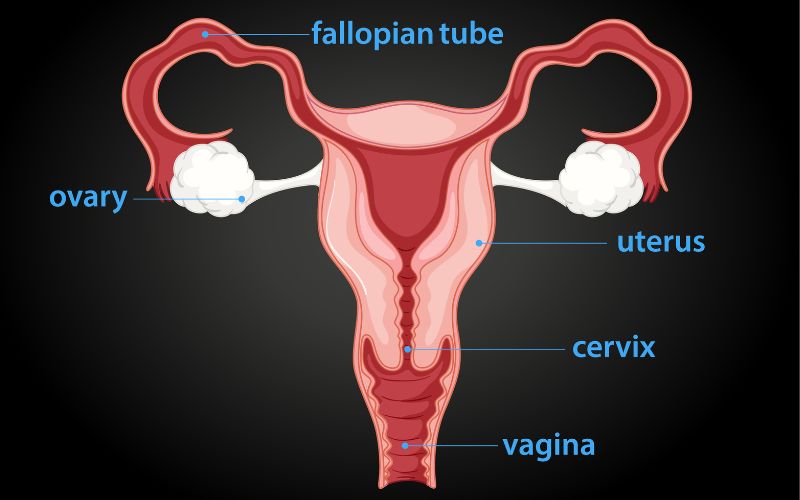The term outie vagina often raises curiosity and confusion. While it might sound unusual, it’s simply a way to describe a condition where the vaginal opening or external genitalia appear more pronounced or protruding. Understanding the outie vagina is important for women to be able to identify any potential concerns or simply appreciate the diversity of female anatomy. In this article, we will break down what an outie vagina is, what causes it, and how to deal with it.
Key Points:
- An outie vagina refers to external genitalia that protrude slightly more than typical anatomy.
- This condition is often normal, but it may be linked to certain factors like genetics, childbirth, or hormonal changes.
- It is important to speak to a healthcare provider if there is any discomfort or concern.
What Causes the Outie Vagina?
Understanding the Causes of Outie Vaginas
The causes of an outie vagina are varied. It can be influenced by a range of factors, from genetics to natural physical changes that occur throughout life. For some women, the structure of the external genitalia may result in a more noticeable protrusion. These differences in appearance can also be attributed to how the vaginal muscles and surrounding tissue develop during puberty. Hormonal fluctuations, including those related to pregnancy, menopause, and childbirth, can also contribute to this condition.
Genetic Factors and Anatomy
Genetics play a significant role in determining the shape and appearance of a woman’s external genitalia. Some women may naturally have a more pronounced labia minora (the inner folds of the vagina), which can create an “outie” appearance.
Pregnancy and Childbirth
Pregnancy and childbirth can impact the structure of the vaginal opening. The pressure of childbirth can stretch the tissues and cause changes in their appearance, potentially resulting in an outie vagina.
Hormonal Changes
Hormonal changes that occur during puberty or due to contraceptive use can also affect the size and shape of the labia. Some women experience swelling or more noticeable protrusion of the vaginal lips due to changes in hormone levels.
Is the Outie Vagina Normal?
How Normal Is the Outie Vagina?
Many women worry when they notice a difference in the appearance of their genitalia. It’s important to note that an outie vagina is typically a normal variation of anatomy and does not require treatment unless it causes discomfort or other concerns. Every woman’s body is unique, and there’s a wide range of what is considered “normal.”
The appearance of the labia, which includes the labia majora (outer lips) and labia minora (inner lips), varies greatly from person to person. Some may have more prominent labia minora, while others may have more symmetrical or tucked-in folds. As long as there is no pain or irritation, an outie va-gina is simply a natural bodily variation.
How to Know If It’s Normal
It is normal if the outie vagina doesn’t cause pain, itching, or irritation. Any discomfort may indicate the need to consult a doctor. Always trust your body’s signals and get checked by a healthcare professional if you’re uncertain.
Can an Outie Vagina Cause Any Problems?
Potential Problems Linked to the Outie Vagina
In most cases, an outie vagina does not pose any health risks. However, there are a few issues that some women might face due to the physical appearance of the vagina. These issues are generally related to irritation, discomfort, or self-consciousness, rather than medical concerns.
Chafing and Discomfort
If the labia minora protrudes more than usual, it can cause discomfort during certain activities, such as wearing tight clothing or during physical activities like running. This is usually easily remedied with the right kind of underwear that provides more support or protection.
Self-Esteem Issues
For some women, the appearance of an outie vagina might affect their self-esteem. They might feel embarrassed or self-conscious, especially if they are unaware that it is a common variation of anatomy. In these cases, support from a healthcare provider or counselor may be helpful to improve body image and confidence.
Note: It’s important to remember that every body is different, and there is no “perfect” way for the vagina to look.
Can You Change the Appearance of an Outie Vagina?
Options for Changing the Appearance of an Outie Vagina
In cases where the outie vagina causes discomfort or significant self-consciousness, there are options available for women who wish to change the appearance of their genitalia. However, these options should always be carefully considered and discussed with a medical professional.
Labiaplasty Surgery
One option is labiaplasty, a cosmetic surgical procedure that reshapes the labia to reduce the protrusion. This procedure is typically elective and performed for aesthetic reasons. It is essential to fully understand the risks and recovery process before undergoing surgery.
Non-Surgical Methods
There are no non-invasive ways to significantly alter the appearance of an outie. However, proper hygiene, wearing comfortable clothing, and using specific products designed to reduce irritation can help manage discomfort.
Reminder: Always consult a healthcare provider to discuss any concerns or potential procedures before deciding.
Conclusion
An outie vagina is simply a variation of female anatomy that many women experience. While it may be different from what is often depicted in the media, it is typically a normal and harmless condition. The appearance of the vagina can be influenced by many factors, including genetics, pregnancy, and hormonal changes. As long as there is no pain or discomfort, it should not be a cause for concern.
For those who feel self-conscious or experience discomfort, there are ways to manage the situation, including wearing appropriate clothing or even opting for cosmetic surgery. The most important thing is to understand that your body is unique, and seeking guidance from healthcare professionals can provide clarity and support. Embrace your natural body and feel confident in your own skin!
FAQ’s
- Is an outie vagina normal?
Yes, it is a normal variation of anatomy, and most women have no issues with it. - Can an outie vagina cause health problems?
An outie typically does not cause health issues, but it may lead to minor discomfort or irritation in some cases. - What causes the outie vagina?
The appearance of an outie can be influenced by factors like genetics, pregnancy, childbirth, or hormonal changes. - How can I manage discomfort from an outie vagina?
Wearing comfortable, supportive clothing and practicing proper hygiene can help alleviate discomfort. - Should I be concerned about the appearance of my vagina?
If you experience no discomfort or irritation, the appearance of your vagina is nothing to worry about. However, if you’re unsure, consult with a healthcare provider.


